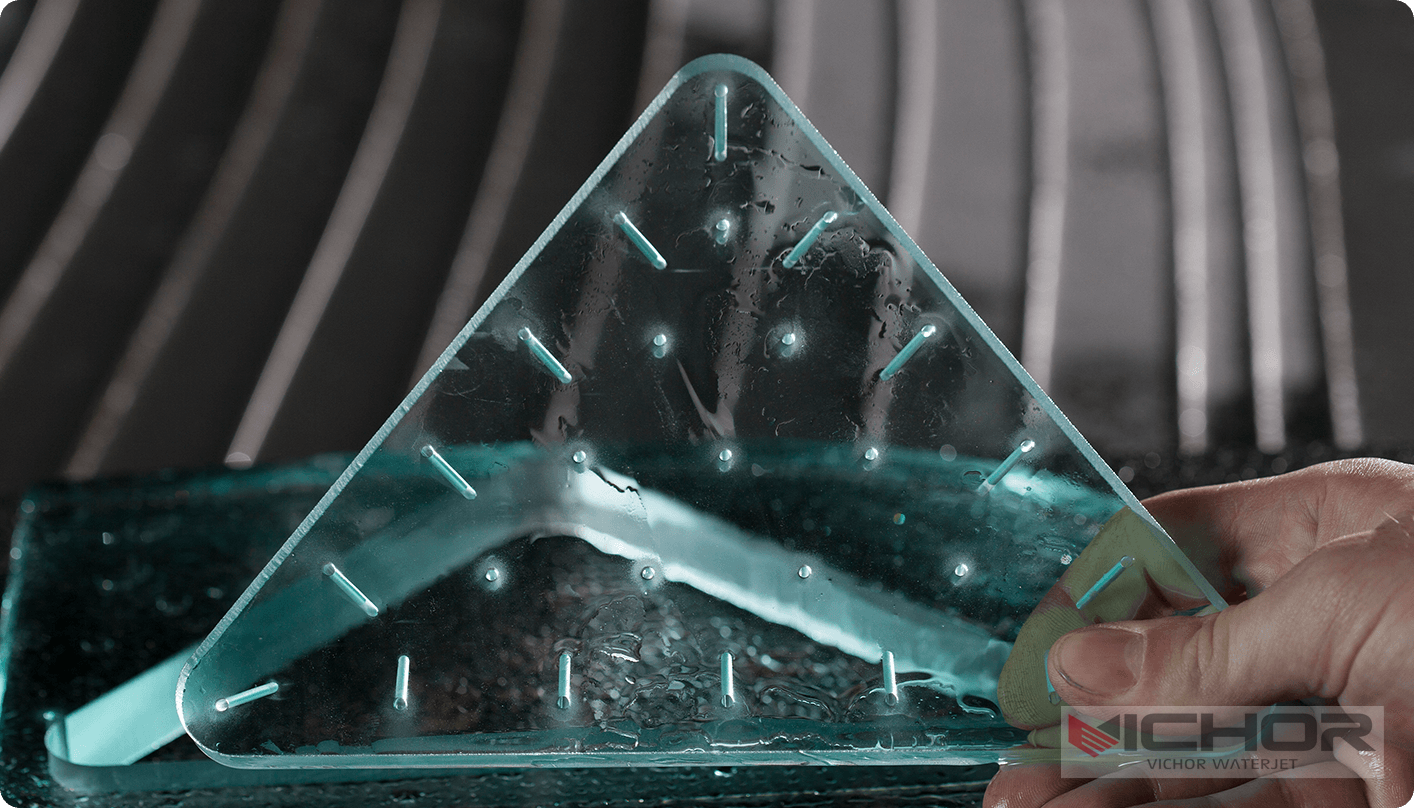
Unlocking Precision and Hygiene: The Ultimate Guide to Water Jet Cutting Systems for Food Products
In the fast-paced world of food processing, efficiency, precision, and hygiene are paramount. Traditional cutting methods often fall short, leading to waste, contamination risks, and inconsistent results. Enter water jet cutting systems for food products—a revolutionary technology that uses high-pressure water streams to slice through various food items with unparalleled accuracy. Whether you’re handling delicate pastries, tough meats, or fibrous vegetables, these systems offer a clean, cold-cutting solution that preserves food quality and extends shelf life. As the demand for automated, sanitary food processing grows, understanding the ins and outs of water jet cutting systems for food products becomes essential for manufacturers aiming to stay competitive. This comprehensive guide delves into the core aspects, applications, costs, and technical details, helping you make informed decisions for your business.
What Are Water Jet Cutting Systems for Food Products and How Do They Compare?
Water jet cutting systems for food products utilize a high-velocity stream of water, often mixed with abrasives for harder items, to cut through food materials without heat-affected zones. This cold-cutting process ensures that the nutritional value, texture, and flavor of food remain intact, unlike thermal methods like laser cutting, which can cook edges and alter taste. Compared to mechanical blades, which require frequent sharpening and can harbor bacteria, water jet systems offer superior hygiene because the water is typically purified and the process minimizes contact points. Additionally, these systems excel in versatility, handling everything from soft fruits to frozen goods without cross-contamination. When evaluating water jet cutting systems for food products against alternatives, consider factors like speed, precision, and maintenance. For instance, ultrasonic cutting might be quieter but lacks the power for dense items, while traditional saws often produce more waste. Overall, water jet technology stands out for its adaptability and cleanliness, making it a top choice for modern food processing facilities.
Key Applications of Water Jet Cutting in the Food Industry
The applications of water jet cutting systems for food products span a wide range of sectors, from bakeries and meat processing plants to ready-to-eat meal producers. In the meat industry, these systems precisely portion cuts like steaks or poultry, reducing bone dust and ensuring consistent sizes. For bakery items, water jets cleanly slice cakes, bread, and pastries without crushing delicate structures, which is crucial for maintaining product appeal. Dairy products, such as cheeses, benefit from the non-thermal process that prevents melting and preserves freshness. Even fruits and vegetables can be diced or shaped with minimal juice loss, enhancing yield and reducing waste. Moreover, water jet cutting systems for food products are ideal for handling frozen foods, as they avoid the thawing that occurs with other methods, thus maintaining safety and quality. By integrating this technology, businesses can streamline operations, meet strict hygiene standards, and cater to consumer demands for visually appealing, high-quality food items.
How to Choose the Right Water Jet Cutting System for Your Needs
Selecting the appropriate water jet cutting system for food products involves assessing several factors to match your specific operational requirements. Start by considering the types of food you process—softer items like tofu may only need pure water jets, while harder foods like frozen meat might require abrasive-enhanced systems. Next, evaluate your production volume: high-output facilities may benefit from automated, multi-head systems that integrate with conveyor belts, whereas smaller operations could opt for simpler, manual setups. Hygiene is critical in food processing, so look for systems with easy-to-clean components,
 corrosion-resistant materials, and compliance with food safety regulations like HACCP or FDA standards. Additionally, factor in space constraints, as water jet cutting systems for food products vary in size. Don’t forget to assess the supplier’s support services, including training, maintenance, and spare parts availability. By thoroughly analyzing your needs, you can invest in a system that boosts efficiency, reduces costs, and ensures consistent quality in your food products.
corrosion-resistant materials, and compliance with food safety regulations like HACCP or FDA standards. Additionally, factor in space constraints, as water jet cutting systems for food products vary in size. Don’t forget to assess the supplier’s support services, including training, maintenance, and spare parts availability. By thoroughly analyzing your needs, you can invest in a system that boosts efficiency, reduces costs, and ensures consistent quality in your food products.
Finding Reliable Suppliers and Commercial Services for Water Jet Systems
When searching for suppliers of water jet cutting systems for food products, it’s essential to prioritize reliability, expertise, and after-sales support. Begin by researching manufacturers and distributors with proven experience in the food industry, as they will understand unique challenges like sanitation and compliance. Attend industry trade shows or browse online directories to compare options, and read customer reviews to gauge satisfaction levels. Look for suppliers who offer customized solutions, as off-the-shelf systems might not suit all food processing environments. Key questions to ask include warranty terms, installation services, and availability of technical support. Additionally, consider suppliers that provide demonstrations or trial periods to test the system with your specific food products. Building a long-term partnership with a trusted supplier ensures that your water jet cutting systems for food products remain operational and up-to-date, minimizing downtime and maximizing productivity in your facility.
Cost Analysis and Pricing Factors for Water Jet Cutting Systems
The cost of water jet cutting systems for food products can vary widely, typically ranging from tens of thousands to hundreds of thousands of dollars, depending on features and scale. Initial investment includes the machine itself, installation, and any necessary modifications to your facility, such as water filtration systems or reinforced flooring. Operational costs involve electricity, water consumption, abrasive materials (if used), and routine maintenance like replacing nozzles or pumps. While this might seem high compared to traditional cutters, the return on investment often justifies the expense through reduced waste, lower labor costs, and improved product quality. For example, water jet cutting systems for food products can achieve yield improvements of up to 10-15% by minimizing trim loss. Leasing or financing options may be available for businesses with budget constraints. Always request detailed quotes from multiple suppliers and consider long-term savings when evaluating pricing, as a higher upfront cost could lead to greater efficiency and profitability over time.
Deep Dive into the Technology and Process of Water Jet Cutting
The technology behind water jet cutting systems for food products is both sophisticated and efficient, relying on high-pressure pumps that propel water at speeds exceeding Mach 3. In pure water jet systems, the stream alone cuts through soft foods, while abrasive jets incorporate garnet or other safe materials to handle harder items. The process begins with water intensification, where a pump generates pressures up to 60,000 PSI or more, followed by precise nozzle control that directs the stream via CNC programming for accurate shapes and sizes. One key advantage is the cold-cutting nature, which eliminates heat-related degradation, making it ideal for temperature-sensitive food products. Maintenance focuses on preventing clogging and wear, with regular checks on filters and seals to ensure hygiene. Recent advancements include intelligent software for pattern optimization and IoT integration for real-time monitoring. By understanding these technical aspects, operators can better utilize water jet cutting systems for food products, enhancing performance and adapting to evolving industry trends.
Frequently Asked Questions About Water Jet Cutting Systems for Food Products
Q1: What types of food are best suited for water jet cutting systems?
A1: Water jet cutting systems for food products are highly versatile and can handle a wide range of items, including meats, fruits, vegetables, baked goods, and dairy products. They excel with delicate or temperature-sensitive foods because the cold-cutting process avoids heat damage, preserving texture and flavor.
Q2: How hygienic are water jet cutting systems compared to other methods?
A2: These systems are exceptionally hygienic for food processing, as they use purified water and have minimal contact surfaces, reducing bacterial growth risks. Regular cleaning and compliance with food safety standards further enhance hygiene, making them superior to blade-based systems that can trap residues.
Q3: What is the typical maintenance required for these systems?
A3: Maintenance for water jet cutting systems for food products includes routine checks on pumps, nozzles, and filters to prevent clogging and ensure consistent performance. It’s recommended to follow the manufacturer’s schedule, which might involve daily inspections and periodic part replacements, to uphold efficiency and sanitation.
Q4: Can water jet cutting be integrated into existing production lines?
A4: Yes, many water jet cutting systems for food products are designed for seamless integration with existing production lines, often through modular setups or conveyor interfaces. Consulting with suppliers can help customize the integration to match your workflow and automation needs.
Q5: What are the environmental impacts of using water jet technology in food processing?
A5: Water jet cutting systems are generally environmentally friendly, as they use water—a renewable resource—and often incorporate recycling systems to minimize waste. However, energy consumption and water disposal should be managed responsibly, and many modern systems are designed with sustainability in mind to reduce overall ecological footprints.
In conclusion, water jet cutting systems for food products represent a transformative approach to food processing, offering precision, hygiene, and versatility. By leveraging this technology, businesses can enhance product quality, reduce waste, and meet evolving market demands. As you explore options, remember to assess your specific needs and partner with reliable suppliers to maximize benefits.
continue reading
Related Posts
- 1925 words9.7 min read



